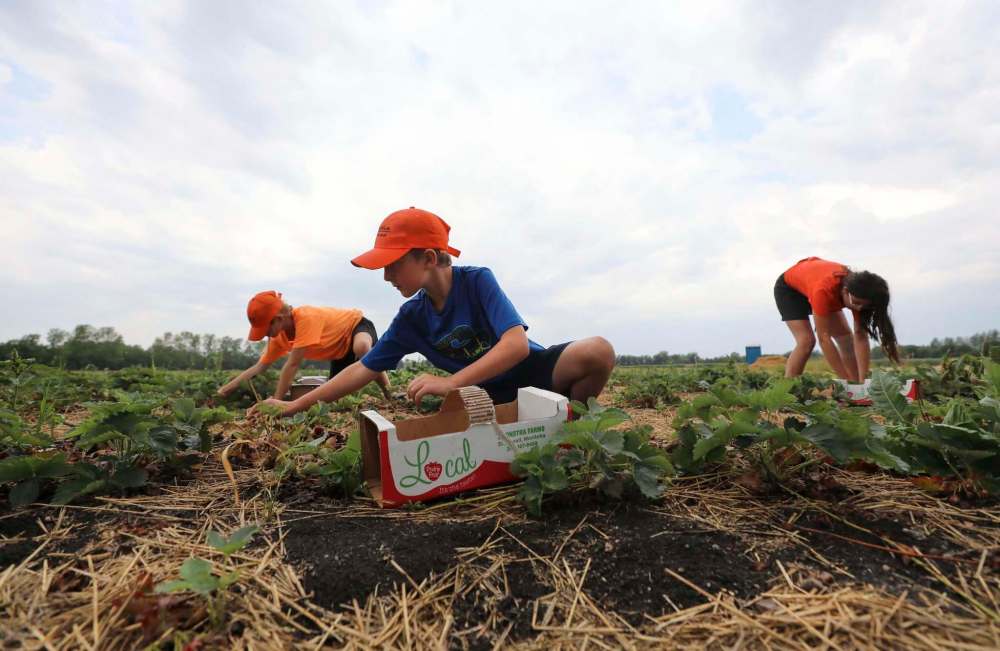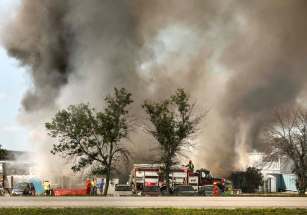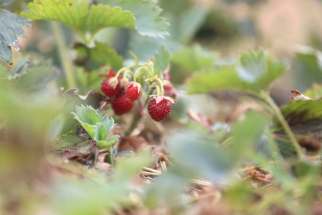Manitoba berry farmers experience extreme weather crunch
Read this article for free:
or
Already have an account? Log in here »
To continue reading, please subscribe:
Monthly Digital Subscription
$0 for the first 4 weeks*
- Enjoy unlimited reading on winnipegfreepress.com
- Read the E-Edition, our digital replica newspaper
- Access News Break, our award-winning app
- Play interactive puzzles
*No charge for 4 weeks then price increases to the regular rate of $19.00 plus GST every four weeks. Offer available to new and qualified returning subscribers only. Cancel any time.
Monthly Digital Subscription
$4.75/week*
- Enjoy unlimited reading on winnipegfreepress.com
- Read the E-Edition, our digital replica newspaper
- Access News Break, our award-winning app
- Play interactive puzzles
*Billed as $19 plus GST every four weeks. Cancel any time.
To continue reading, please subscribe:
Add Free Press access to your Brandon Sun subscription for only an additional
$1 for the first 4 weeks*
*Your next subscription payment will increase by $1.00 and you will be charged $16.99 plus GST for four weeks. After four weeks, your payment will increase to $23.99 plus GST every four weeks.
Read unlimited articles for free today:
or
Already have an account? Log in here »
Hey there, time traveller!
This article was published 12/07/2021 (1610 days ago), so information in it may no longer be current.
From lack of winter snowfall to spring frost to summer drought, Manitoba’s small berry farm operators are feeling squeezed.
Some are being forced out of the industry all together.
After more than a decade of operation, Colleen and Mark Edmunds have made the difficult decision to retire from Grunthal Berries following the 2021 season.

The two planted their first berry crops some 70 kilometres south of Winnipeg because of their love of the outdoors and passion for farming. However, the stresses that come with increasingly variable and volatile of Prairie weather, and recent extreme weather conditions, have proved too much.
“If we were making a good bit of money every year, I’m sure we’d do it for a few more years,” Colleen said Monday. “You get to a point where you think, well, let’s just enjoy our summer.”
This year, following unreliable winter snowfall, Grunthal Berries found itself operating at only one per cent of normal production, which came after a 2020 season at 20 per cent.
It has been a time of uncertainty for many businesses, but small berry-picking farms in Manitoba have seen challenges in addition to the COVID-19 pandemic. In recent years, winter and summer weather has become increasingly more unpredictable, resulting in potential large loss of crops.
Manitoba is currently logging increasingly higher and lower temperatures, coupled with a current extreme drought, according to David Phillips, senior climatologist at Environment and Climate Change Canada.
“It’s almost as if nature’s forgotten how to rain,” he said.
According to Phillips, the current drought has gone on for two years. In a normal June-July period, the province would typically record around 85 millimetres of precipitation; in 2021, however, it was just 1.5 mm.
One of the biggest problems, Phillips said, is the fact the same extreme weather is continuing for extended periods of time — and when rain does come, it’s all in one day, rather than sprinkled throughout the month, which does more harm to crops than good.

“What’s not happening — and that’s the problem — is normal weather,” he said.
Danny Blair, director of science at Prairie Climate Centre in Winnipeg, echoed that stance, adding the prediction that, as global warming continues, recent extreme growing conditions may be a sign of what’s to come.
“It’s causing all kinds of havoc to the agricultural sector, of course, including the berry growers.”
This year, berry farms in the province started off grappling with a spring frost in May that killed many existing strawberry crops and forming blossoms.
Strawberry plants depend on predictable conditions. Young plants take a year before they grow berries to harvest, and require near year-round care.
In addition, the amount of moisture in the soil contributes to the amount and size of berries. So even if some farms haven’t seen drought as their main worry, it has played a role in the fruit’s development.
Boonstra Farms, located outside Stonewall, has underground irrigation for its plants, but without the rain, the crops aren’t able to reach their full potential, co-owner Carl Boonstra explained.
The farm is still welcoming guests to pick their own strawberries, but compared to past years, the crop has been depleted “severely,” he said.

Angie Cormier, co-owner of Cormier’s Berry Patch, said Monday, due to weather-induced stress on the plants, the farm near La Salle has lost two-thirds of its normal total harvest.
Despite the challenges, however, Cormier said it has produced enough strawberries to allow the public to pick their own — only by appointment and with smaller limits.
“As farmers, we can only go one year at a time,” she said.
“This is one year, we’ll get through it. And we’re grateful for the fruit that we have and we’re grateful that we have people to come out and pick the fruit that’s there, and it’s great fruit.”
gillian.brown@freepress.mb.ca









